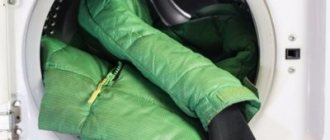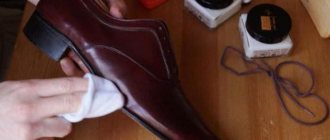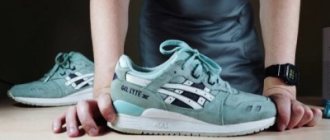Automatic washing machines made by LG, Indesit, Samsung, Bosch or Ariston Hotpoint are quite common. These devices are reliable and make washing things easier. But, continuous operation can lead to wear and tear of any household appliance. Therefore, it is important to know how many times in a row you can wash it in a washing machine and what it depends on.
What happens if you put a microwave on top of a washing machine?
Also, the surface of household appliances may be damaged. And the main problem for a microwave oven that is located on a washing machine is vibration during washing. In addition, in the operating instructions you can find that you cannot install an appliance of any power on the washing machine.
Interesting materials:
How to make matcha latte? How to make a matte nail finish? How to make frosted glass with your own hands? How to make brush strokes on a photo on Android? How to make brush strokes in Pixart? How to make a Witcher 3 sword? How to make a medical policy online? How to make chalk for a blackboard at home? How to make chalk for drawing on asphalt? How to make chalk from eggshells?
How to use the machine correctly: rules and tips
Each manufacturer, along with the machine, also produces instructions with operating rules. But not everyone uses it. But in vain, because if you follow the instructions, the car will last at least 5 years longer. And the first thing you should think about is proper installation.
- High-quality connection. Firstly, you need to connect the washing machine to the water supply using high-quality, sealed hoses. If it is connected to a pipe with cold water, there must be a special plug. Secondly, it is recommended to plug the washing machine into a separate outlet. It is highly undesirable for the machine to operate simultaneously with other electrical appliances.
- Surface. It is advisable to place the washing machine on a rubber mat so that it smoothes out any unevenness. During operation, the machine bounces, vibrates, and any unevenness in the floor can affect its operation extremely negatively. Moreover, it will be more sustainable.
There is a whole list of tips, following which the machine will not only say “thank you”, but will also serve faithfully for many more years. And the list looks something like this:
- Do not overload the washing machine. You need to load as much as indicated in the instructions depending on the type of laundry (cotton, wool, synthetics, etc.);
- Carefully check the contents of your pockets;
- Do not add too much powder. Quantity does not mean quality; if there is too much of it, it will remain on things and will not have time to wash out. And while wearing it can cause itching and even allergies;
- Use only powder intended for automatic washing machines;
- Once every 3 months you need to wash the “washing machine” using special descaling products;
- Before washing, turn things inside out - this way they will wear out less and lose color;
- Once every six months, rinse the powder receptacle under running water and clean the compartment for it;
- After each wash, soak water from the hatch rubber with a dry cloth (to prevent fungus);
- Once every six months, unscrew and clean the drain pump filter;
- Do not turn on the washing machine during power surges;
- Maintain intervals between breaks (at least half an hour);
- Do not place anything heavy on the surface of the machine.
What breaks are best to take?
The answer to this question is very ambiguous. Opinions differ among both manufacturers and washing machine repairers. In general, the amount of time varies from 20 minutes to 5 hours. Depends, of course, on the model, but it is advisable to maintain a 2-3 hour break. Even if the wash is done in fast mode.
Two washes a day is the most optimal load on the machine. It is better to organize washing several times a week, but for 1-2 cycles of running the “washing machine” per day, than to organize a “Big wash” on Sunday and wash all the things that have accumulated over the week in 5-6 approaches.
Fighting stains
Oily spots. A fresh grease stain can be removed with table salt. Sprinkle the substance onto the stain and wait twenty minutes. After the time has passed, shake off the salt and send the item for washing.
The stain remover removes greasy marks well. Choose a substance with an active anti-fat formula. Read the instructions and treat the stain accordingly. After removing stains, wash the clothing at the highest temperature allowed for the fabric type.
Sweat marks. When wearing T-shirts, blouses and shirts, yellow stains often appear, which are difficult to get rid of.
If the stains are fresh, they can be washed off by machine washing. The water temperature should be above forty degrees.
If yellow marks cannot be removed, you need to prepare a cleaning mixture. Combine ammonia and hydrogen peroxide in equal proportions. Treat the stains with the solution and leave for twenty minutes. Then rinse the solution with running water and wash the items.
A mixture of baking soda and dishwashing gel removes sweat stains well. Prepare a thick paste from these substances, apply to the desired areas of clothing and leave for a while. When there are no yellow marks left, you can send the clothes for washing.
Grass marks. This problem is often faced by mothers of small children and athletes.
A mixture of glycerin and liquid soap will help remove green marks. Mix the substances in equal proportions and apply to the stains. After a quarter of an hour, rinse off the paste and wash your clothes as usual.
If this method does not help, treat the stains with a stain remover that contains additives with active enzymes. These are biologically active substances that can destroy organic pollution.
Traces of chocolate, cocoa and coffee. If possible, such stains should be dealt with immediately, otherwise, after drying, they will be difficult to wash off.
Fresh stains should be sprinkled with salt, it will absorb the remains of the drink. Next, shake off the crystals of the substance and wash the item in cool clothes. Stains from cotton fabric can be removed using table vinegar, ammonia or peroxide. Apply any of the listed substances to the stain and wait a little. Then rinse the solution under running water.
Drink stains can be removed from wool fabric using heated glycerin. Soak a washcloth in the product and gently scrub the stain. After treatment, rinse off the glycerin with warm water.
Stains from juices, berries, fruits and wine. Any thing can get dirty, so you need to know how to remove stains correctly.
Fresh stains should be sprinkled with salt or starch. After the powder has absorbed any remaining liquid, remove it and wash your clothes.
Stains from knitwear and cotton should be removed with warm milk or kefir. Soak a sponge in the milk product and treat the stain. After it disappears, wash the item.
It is better to dry clean clothes made from expensive silk.
Burnt marks from the iron. If for some reason there is a mark left on your clothes from the iron, do not rush to get upset; if you take the right measures, you can get rid of them.
Purchase a special product for removing burnt marks from a hardware store. Read the instructions carefully and use the product according to it. To avoid stains in the future, keep the soleplate of your iron clean. Buy a special pencil for cleaning soles and use it as needed.
Burnt marks can be removed using lemon juice or citric acid, a mixture of soda and extra salt, as well as a solution of peroxide and ammonia. Mix the substances listed in pairs in equal proportions and treat the stains with the resulting paste.
Wine vinegar can remove burn marks from delicate fabrics.
What is the normal use of the machine?
How often you can wash things in a washing machine directly depends on its model, brand and operating conditions. If this is a budget option, and even if it is used to the fullest without any interruptions, then such a machine will not last long. It is not recommended to do too many washes in a day - even high-quality equipment will not withstand it.
On average, a modern machine will last about 15 years of full use. But only if they don’t use it too often: 3-4 times a week maximum. Nothing prevents you from using it more often, at least twice a day, but the service life of the “washing machine” will be shorter. Thus, it is advisable not to use a regular washing machine for your home more than 4 times a week, since it is not designed for heavy loads.
What are the dangers of continuous operation of a washing machine?
And yet, why shouldn’t you wash things too often? The fact is that during washing the parts get very hot. If you do not take breaks between washes, overheating occurs, and if this happens regularly, the service life of each part is reduced. If you do not allow the equipment to recover, it will simply fail.
Regardless of which particular part refuses to work, you will have to go to a specialist. In addition, it is not recommended to repair the car yourself - you can only make things worse. Therefore, it is better to contact a professional. Most often, the drain pumps are the first to break, blocking the hatch and heating element. Often the electronic module (which controls the operation of the entire machine) also fails. Due to constant overheating, the engine may be the first to break down, repairing which will cost half the cost of the “washer” itself.
Program
We suggest following general recommendations when washing:
- Wash light-colored cotton and linen clothes at 95°. The spin speed can be set to maximum.
- Before washing colored cotton items, select a temperature of 60 degrees. Spin speed is maximum.
- Washing clothes made of synthetics – no more than 50°. Spin speed – 800-900 rpm.
- Wool and silk require a 40-degree temperature and a spin speed of no more than 600 rpm. But experts advise not to use the spin cycle before washing woolen or silk items in an automatic machine. This way things will retain their shape.
- Many models do not have a separate program for clothes that are prone to staining. Just wash in cold water - no more than 30°. Not sure which colors can be washed together? It’s better not to risk it and put white clothes with white clothes, black clothes with black clothes, red clothes with red clothes, and so on.
If you have to wash white linen, then for such a bedding set it is allowed to use products with bleaches. But it is also recommended to add “soft” detergents to the powder container.
Washing shoes
Do you want to know how to wash your shoes efficiently and effectively, removing dirt from them and without damaging your favorite pair of boots? Follow the rules that follow:
- Do not wash leather shoes in the SMA - they will lose their shape and will be unusable.
- Do not machine wash dyed shoes. If there are glued elements on the shoes, then most likely they will fall off during washing.
- Clean the sole from dirt - wash it, rinsing off the dirt with a cloth, or use a special cleaning brush. Neglecting this point risks that pebbles and pieces of dirt will get into the washing machine filter, and this will result in serious damage or blockage.
- Choose low temperature mode, 30 degrees maximum.
- Remove insoles and laces (if present) and wash them separately or by hand.
- Dry, tightly stuffed with white paper. Do not use newspapers or magazines if you do not want to read from the insoles later - the letters may transfer to the fabric.
Important! You cannot wash 2-3 pairs of shoes together. Heavy boots can damage the sunroof glass.
Sorting laundry
Washing in an automatic machine requires sorting the laundry. Divide things into several piles.
If you plan to wash multi-colored items, divide the laundry by color. You also need to separate your laundry by fabric type. Pay special attention to heavily soiled items - they need additional treatment.
Recommendation! Install a ventilated basket in your bathroom. This will prevent stubborn damp stains from appearing.
Loading
Let's answer the question: what can be washed with what and loaded into the drum. When thinking about what items can be washed together, you should take into account not only the color and type of fabric, but also the size (volume).
Small things with small things, large things with large ones - this measure will save the drum from possible imbalance.
Important! Do not wash small and bulky items at the same time. This may cause the machine to become unbalanced.











